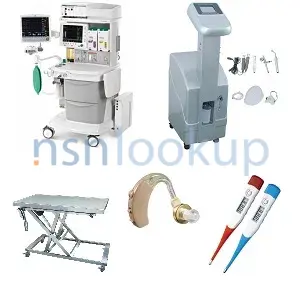Surgical Foreign Body Electronic Locator
Item Name Code (INC) 13602
 |
A device for locating foreign metallic bodies in the tissue by use of suitable probes which generate a magnetic field; the presence of a magnetic body within this field is indicated by a meter or by a sound signal through an amplifier system.
 Additional Information for Surgical Foreign Body Electronic Locator
Additional Information for Surgical Foreign Body Electronic Locator
Surgical Foreign Body Electronic Locators are medical devices used to locate and remove foreign objects that may have been accidentally left inside a patient's body during surgery. These devices use advanced technology, such as X-rays or electromagnetic fields, to detect the presence of foreign bodies, such as surgical instruments or other objects, within the patient's body.
The Surgical Foreign Body Electronic Locator falls under the supply class of Medical And Surgical Instruments, Equipment, And Supplies, which includes a wide range of instruments and equipment used in medical and surgical procedures. This supply class is part of the larger supply group of Medical, Dental, And Veterinary Equipment And Supplies, which encompasses various supplies and equipment used in the healthcare industry.
The Surgical Foreign Body Electronic Locator is an essential tool in surgical settings as it helps ensure patient safety by identifying and removing any foreign objects that may have been inadvertently left behind during a procedure. This device plays a crucial role in preventing potential complications or infections that can arise from retained foreign bodies.
It is important to note that the specific features and functionalities of Surgical Foreign Body Electronic Locators may vary depending on the manufacturer and model. These devices are typically designed to be safe, reliable, and easy to use, allowing healthcare professionals to accurately locate and remove foreign bodies with minimal invasiveness.
Overall, Surgical Foreign Body Electronic Locators are vital tools in the field of medicine, helping to improve patient outcomes and reduce the risk of complications associated with retained foreign bodies.